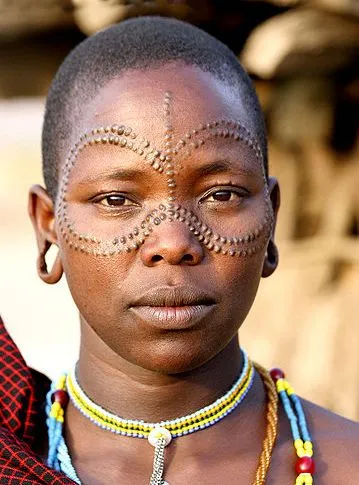The facial markings (scarification), which are common among the Karamojong community, are said to harbor both myths and beauty within the members of the ethnic group.
Paul Losiki, a local resident from Lemusui sub county in Nakapiripirit District, explained that the markings originated from oral tradition and that scarification dates back to the era of slave trade for easy identification and recognition.
“A number of reasons have been adduced for scarification, as some take the markings for spiritual protection, and people argue that it has healing benefits,” said Losiki.
According to Losiki, a section of Karamojong natives consider scarification for beauty, although scars of a certain type, size, and position on the body often indicate group identity in a person’s life.
“The traditional Karamojong have facial markings and body piercings on the nose, ears, lower lips, and other parts that convey hidden messages amongst themselves,” said Losiki.
Female Karamojong natives, according to Losiki, often practice scarification before marriage, and it is a symbol of beauty amongst them.
“While conducting this practice, a 12-year-old girl is cut; she would remain silent without showing any sign of pain during the process, which takes 10 minutes. At the end, the elders would see the ability of the girl to cope with pain as a sign that she will be able to cope with childbirth in the future,” said Losiki.
He said this practice is common in Nyitei and Emongiti communities, and for the men, it is done either on both sides of the hands, depending on the number of people the person has killed.
Tribal markings are made through scarification methods and use razors or sharp objects to make them on the face or other parts of the body.
Then they rub native dye from the charcoal marks to prevent the skin from closing up as the body tries to heal and stops bleeding. The pain and the wounds lasted for weeks to heal.
Most women and men show off their traditional facial scars as an ancient practice that was once common among African tribes, but more recently, the practice has greatly diminished over the years, with many now viewing it as unsanitary and obsolete.















